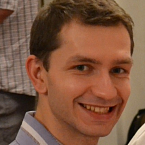Software and Computing
Information technologies are one of key aspects of scientific and technical progress today. This interdisciplinary field includes many tightly connected sciences from electronics till information theory. This course observes key features in computing science and software use as essential basis for applying in engineering, economy, and business.
The goal of mastering the discipline
By the end of this course students will have learnt how to use modern computer equipment for information support tools in professional activities.
The skills you get
- You will be able to compose a high-speed computer and evaluate efficiency of computer hardware.
- You will be able to encode and decode different information in computer systems.
- You will be able to classify computer software and estimate efficiency of different program products.
- You will be able to use different software for visualization and statistical analysis of data.
- You will be able to create computer programs for automatized data processing.
Topics covered
- Lecture 1 - Development of computer hardware. History of computer development. Computer architecture. Hardware: basic components.
- Lecture 2 - Information in computer memory. Numeral systems. Amount of information. Presenting of different information in computer memory.
- Lecture 3-4 - Foundations of computer logics. Logical Statements. Logical operations and functions. Methods of logical functions optimization. Simple digital devices. Technical implementation of logical devices.
- Lecture 5-6 - Computer networks technologies. Computer networks, LAN. OSI model. Internet protocol suite TCP/IP. World wide web structure. Websites: types, models, programs. File sharing networks. Virtual private networks. Wireless sensor network, Internet of things.
- Lecture 7 - Low- and high-level programming of computers. Processor’s structure. Machine code and algorithms. Languages of programming. Algorithms and Control flow.
- Lecture 8 - Computer software. Operating systems. Software types. Malware and Computer viruses. Antivirus software.
- Lab 1 - Computer Architecture and Presentation of Information in Computer. Text Processor Microsoft Word.
- Lab 2 - Logical variables and functions. Boolean algebra laws.
- Lab 3 - Creation and design of presentations in MS Powerpoint.
- Lab 4 - Electronic spreadsheets in Microsoft Excel.
- Lab 5 - Visualization and analysis of large amounts of data in MS Excel.
- Lab 6 - Using R / Python language of programming for data processing.
- Lab 7 - Using R / Python language of programming for data processing.
- Lab 8 - Databases programming in MS Access.
When instructed
- 1st year, 1st and 2nd semester
List of references and sourses
Online course for distance learning:
https://el.istu.edu/course/view.php?id=1833

 Phone
Phone
 Mail
Mail